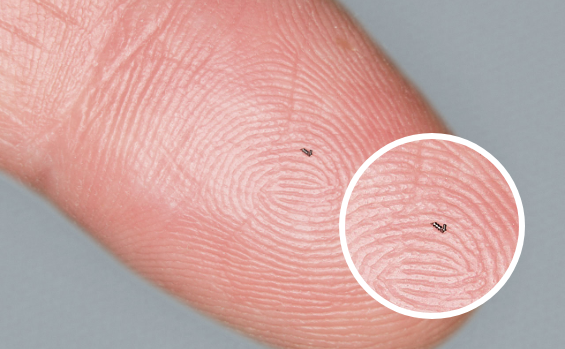
iStent
FAQ
Frequently Asked Questions
The iStent is a tiny one millimetre long tube that is inserted into the natural drainage channel of the eye to help lower eye pressure and reduce the need for medications. It is so small you will not see or feel it after the procedure. The iStent is made of surgical-grade titanium so it won’t be rejected by the body. It will not set off airport scanners and is safe if you need to have an MRI scan.
Glaucoma is most commonly associated with a buildup of fluid pressure inside the eye. This build up of fluid pressure is caused by partial blockage of the natural drainage channel of the eye. The iStent creates a permanent opening in the natural drainage channel of the eye, bypassing the blockage, and helps to drain fluid and reduce eye pressure. It usually requires two iStents insertion for each eye to achieve the desired effect.
The iStent is suitable for patients with mild to moderate open-angle glaucoma who are going to have cataract surgery and wish to reduce their need for glaucoma medications.
The iStent is not suitable for advanced glaucoma or where the natural drainage system of the eye is damaged.
The iStent may help reduce eye pressure and the need for eye drops medications in patients with mild to moderate glaucoma who require cataract surgery. iStent insertion is faster, more straightforward, and less invasive than traditional operations for glaucoma.
In a large clinical trial, two-thirds of iStent patients remained medication-free while achieving an eye pressure reduction of 20% compared to only half of patients who underwent cataract surgery alone.¹ In a UK study, eye pressure was 20% lower at 3 years after iStent insertion.
However, the eye pressure lowering effect of iStent insertion may reduce over time and you may need to resume using glaucoma medications. In a US study, there was no difference in the number of glaucoma medications at 24 months after surgery between patients who had cataract surgery combined with iStent insertion and those who had cataract surgery alone.
The iStent will not cure your glaucoma, reverse any damage already caused by glaucoma, or bring back any lost vision. If your eye pressure is very high (for example more than 30 mmHg on medication), the iStent alone will be unlikely to bring the pressure down to a normal range.
The operation is usually performed under a local anaesthetic, meaning that you are awake but your eye is numb so you will not feel anything. Your eye will be numbed with eye drops and then a small injection will be given around your eye. The injection may cause a pressure sensation and brief discomfort. You will have the option of requesting light sedation. The local anaesthetic takes several hours to wear off and may affect your vision during this time.
iStent insertion takes only 5 – 10 minutes and is performed either at the end or the beginning of cataract surgery. The iStent is inserted into the natural drainage channel of the eye with an injector via a tiny incision.
At the end of the procedure your operated eye will be padded and covered with an eye shield. If your unoperated eye does not see well, your operated eye may not be padded and instead covered with a clear plastic shield.
You will usually be able to go home the same day as your operation. Most patients will need to be examined in the first week after surgery.
Following surgery your eye may be slightly blood shot and swollen for a few days. Your vision may also be blurry for 1 – 2 weeks after the procedure. You may read and watch television; these activities will not harm your eye.
You will be given new anti-inflammatory and antibiotic eye drops to prevent inflammation and infection.
The iStent should work straight away to lower your eye pressure, however you may still need to continue some glaucoma medication in the operated eye. You need to follow your doctor’s instruction. Any drops you use in your other eye must be continued as normal.
As with all eye surgery, you should avoid strenuous activity for the first month including swimming, tennis, jogging, and contact sports. Most people take 1 – 2 weeks off work after surgery, however the length of time will depend on the nature of your work.
You should avoid wearing eye make-up for approximately 4 weeks after surgery.
You will be asked to wear a shield over your eye at night for the first week or so, to prevent accidental injury to your eye whilst you are asleep.
It is safe to fly after surgery, however you will need to be seen regularly by your surgeon in the early post-operative period.
It is normal for there to be a small amount of bleeding inside the eye during the operation but this resolves within a few days. There is a risk the stent could become blocked or come out of position, however this is rare.
In some cases the iStent may not lower eye pressure or its effect may wear off with time. If the iStent fails to lower your eye pressure it will not create any additional harm to your eye. However, you may need to restart your glaucoma medications or have further procedures to control your eye pressure.
The Trabectome, Hydrus, and CyPass are alternative minimally invasive procedures that can be performed at the time of cataract surgery to lower eye pressure in patients with primary open angle glaucoma.
Non-surgical alternatives include continuing to use eye drops to lower eye pressure or a laser procedure called selective laser trabeculoplasty.
- Samuelson, Thomas W., et al. “Randomized evaluation of the trabecular micro-bypass stent with phacoemulsification in patients with glaucoma and cataract.” Ophthalmology 118.3 (2011): 459-467.
- Tan, S. Z., and L. Au. “Manchester iStent study: 3-year results and cost analysis.” Eye (2016).
- Craven, E. Randy, et al. “Cataract surgery with trabecular micro-bypass stent implantation in patients with mild-to-moderate open-angle glaucoma and cataract: two-year follow-up.” Journal of Cataract & Refractive Surgery38.8 (2012): 1339-1345.
Editors
Founding Editors
MIGS.org was developed by glaucoma surgeons with a broad experience in minimally invasive glaucoma surgery to provide patients with evidence-based and unbiased information.


Glaucoma Specialist
Dr Nathan Kerr





